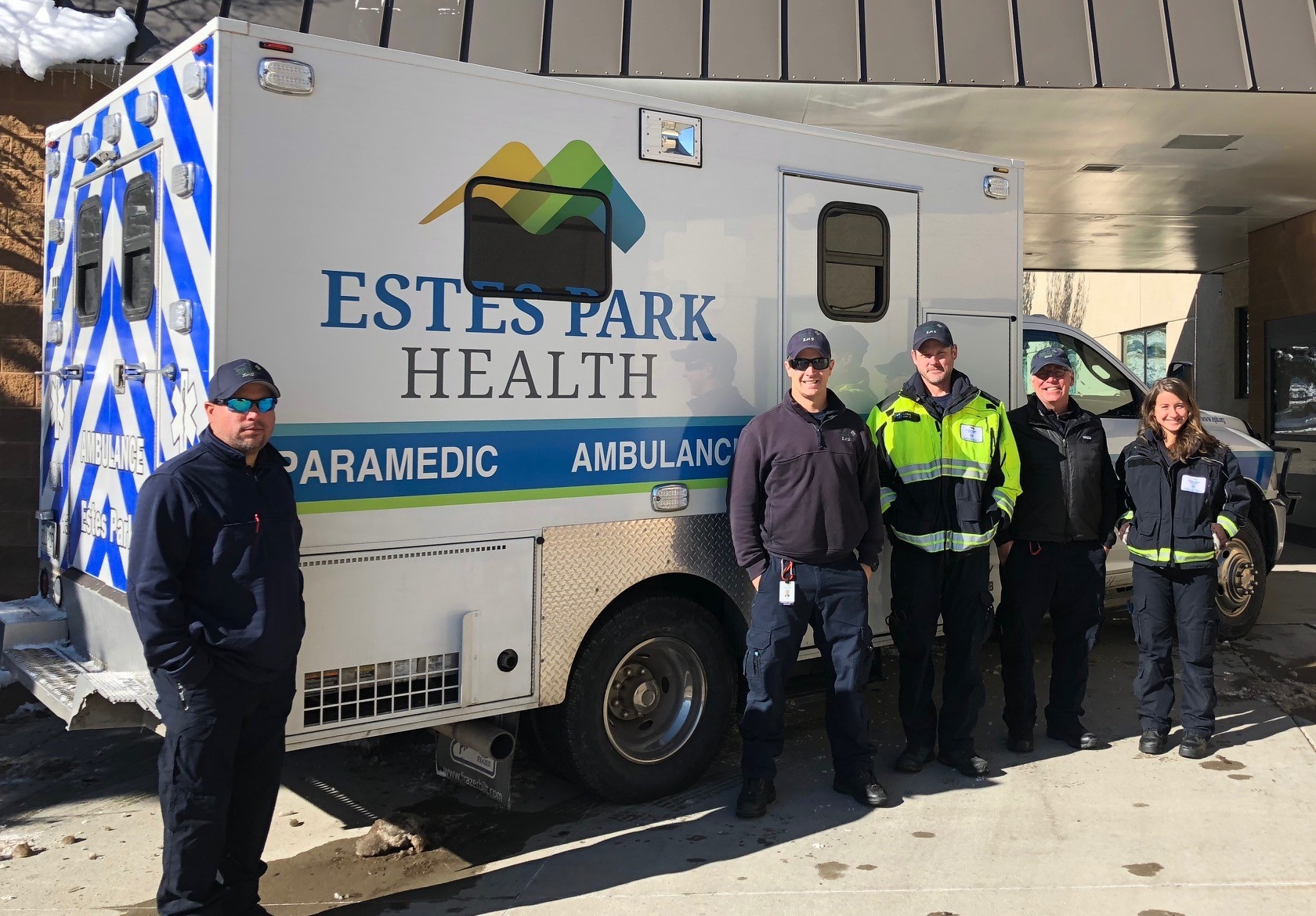Help the Paramedics Find You

Estes Park is privileged to have one of the best ambulance crews in Colorado. But, they can only do their job if they can find you. You don’t expect to have to call 911, but you should be prepared in the event the unexpected happens to you.
Catherine Cornell, Estes Park Health EMT, shared this story, “I work for the Estes Park Health Ambulance service. My crew was dispatched to a house at 4:30 a.m. that was about a mile up a long dirt road. To keep things anonymous, I’m going to call the address we were dispatched to ‘1234 Somewhere Lane’.
The first problem we had was that Somewhere Lane had three name variations that we had to drive on to get to the address. Somewhere Road connected to Somewhere Circle and then we turned onto Somewhere Lane. Having multiple roads with minor variations on the name makes it very difficult in the middle of the night to follow a map. When you call 911, please be very specific about your address.
Once we were on the right road, finding the actual address proved extremely difficult. On this call, we drove past the house until we were at a dead end because there were not any visible house numbers. The two houses at the dead end had addresses of 2345 and 2356. We never saw 1234 on the road we were traveling. After turning around, we drove slowly back down the road and still could not find the address. I finally got out of the ambulance and walked the road to find the house number sign. It was a worn, carved wooden sign that was set back about 20 feet from the road. Remember, ambulance or fire personnel don’t know where to look for your house number on your property, and they are often trying to find you when it is dark or snowing.”
Consider making these updates to your house number sign
The Estes Park Health EMS would recommend that you get house number signs for your house that:
- Have large numbers that are reflective and visible from both directions on the road.
- Are mounted near your driveway.
- Are above the height that snow may be piled.
Allowing the EMS team to quickly and easily find your house may mean the difference between life and death for you or a loved one.
Be prepared when you call 911
To help the Estes Park Health EMS help you, please have the following information available when you call 911:
- What is your complete address – is it a street, road, lane, circle, drive, etc.?
- What is the name of the hotel, condo or rental where you are staying? What is your room number?
- What is the nearest cross street to your home or rental?
- Why are you calling 911? Try to remain calm and clearly explain what has happened.
- Are there any safety issues responding personnel need to know about?
Prepare for an EMS visit
To help the Estes Park Health EMS find your house, please follow these directions:
- Have house number signs visible from both directions, and near your driveway.
- Turn on outside lights and inside lights. For EMS, entering a dark house can be threatening.
- Unlock your door if possible, or tell the dispatcher how responding personnel should enter your house.
- If there is someone available, have them outside to flag down the ambulance.
- Contain your pets. They can block EMS from getting to a patient. Pets feel stress and often are very protective – EMS personnel are strangers to them and even friendly pets can become aggressive in the commotion. Pets can be escape artists and when people are coming and going, a pet may sneak out a door.
Help EMS treat you quickly
To help the Estes Park Health EMS treat you quickly, please have the following ready when they arrive:
- A complete list of your medications, typed or legibly written for only the patient (please do not have other people or pet medications listed).
- Provide a description of the problem and let the EMTs know if this ever happened before?
- Be able to share your medical history verbally or in writing.
- Be sure to indicate allergies, especially any drug allergies.
- Have copies of and share any DNR or Advance Care Directives.
- Have your primary care provider information.
- Have an emergency contact or two available.
Preparing for a 911 call is like having a fire evacuation plan. You hope you’ll never have to use it, but you are ready if it happens.


